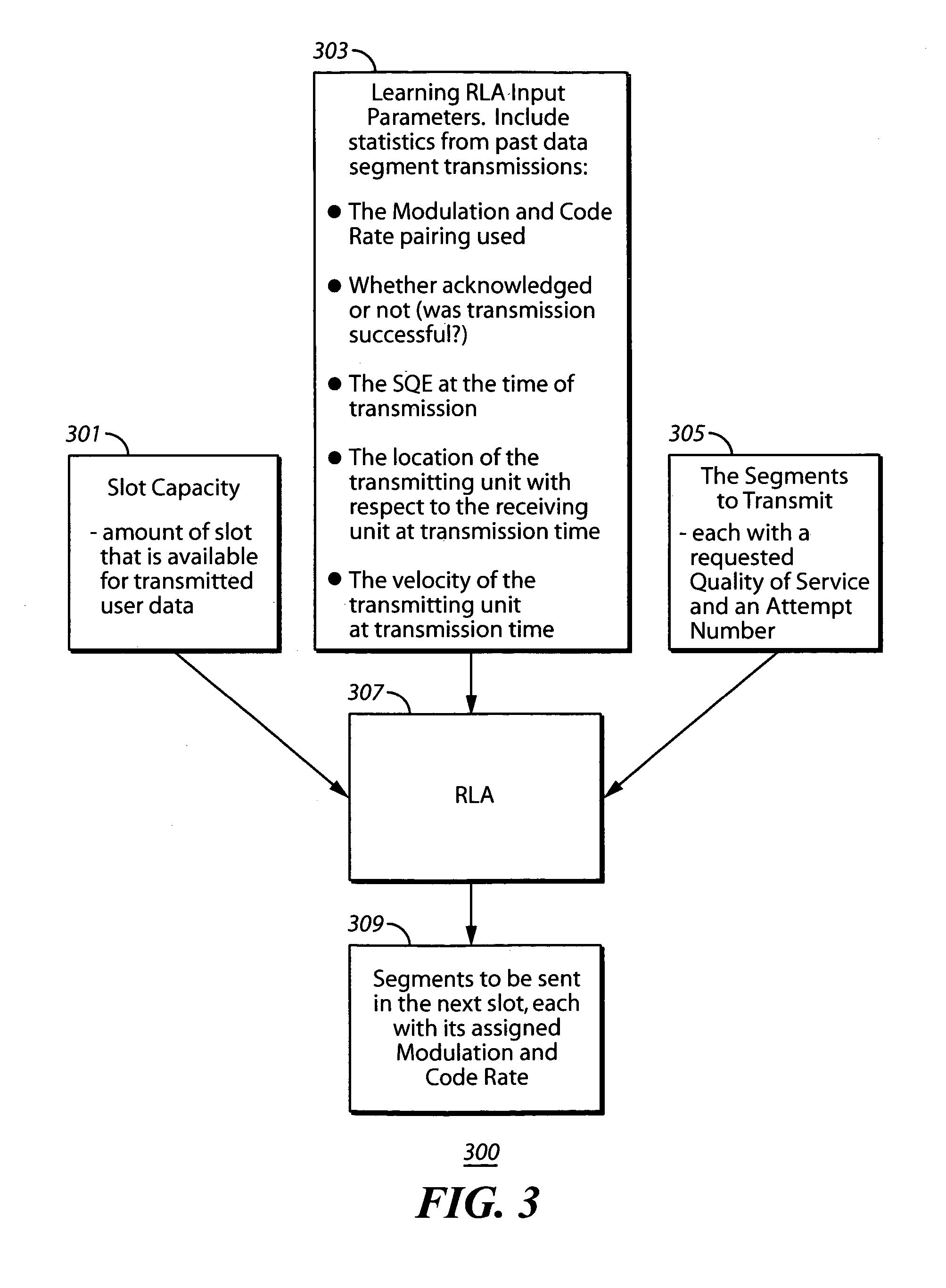Method for the selection of forward error correction (FEC)/ constellation pairings for digital transmitted segments based on learning radio link adaptation (RLA)
a technology of forward error correction and constellation pairing, applied in the direction of channel coding adaptation, data switching network, multiplex communication, etc., can solve the problems of poor application of methods in this art to radio data systems in general, the fringe of the coverage area suffers a lower grade of data throughput, and the user of prior art data communication systems who experience signal quality, etc., to achieve the effect of improving the throughput and/or reliability of future transmissions
- Summary
- Abstract
- Description
- Claims
- Application Information
AI Technical Summary
Benefits of technology
Problems solved by technology
Method used
Image
Examples
Embodiment Construction
[0017]While the specification concludes with claims defining the features of the invention that are regarded as novel, it is believed that the invention will be better understood from a consideration of the following description in conjunction with the drawing figures, in which like reference numerals are carried forward.
[0018]The following paragraphs describe in detail a method for maximizing data communication system throughput in a fashion that avoids the shortcomings revealed in the foregoing discussion of the background art. The method described combines multiple Forward Error Correction (FEC) procedures with multiple modulation constellations, resulting in multiple data rates optimized for a given signal quality measure to provide maximum data throughput for signal conditions.
[0019]In a preferred embodiment, the method may be applied to a Radio Frequency (RF) communication system using TDMA (Time Division Multiple Access) to integrate multiple services, such as user and contro...
PUM
 Login to view more
Login to view more Abstract
Description
Claims
Application Information
 Login to view more
Login to view more - R&D Engineer
- R&D Manager
- IP Professional
- Industry Leading Data Capabilities
- Powerful AI technology
- Patent DNA Extraction
Browse by: Latest US Patents, China's latest patents, Technical Efficacy Thesaurus, Application Domain, Technology Topic.
© 2024 PatSnap. All rights reserved.Legal|Privacy policy|Modern Slavery Act Transparency Statement|Sitemap



